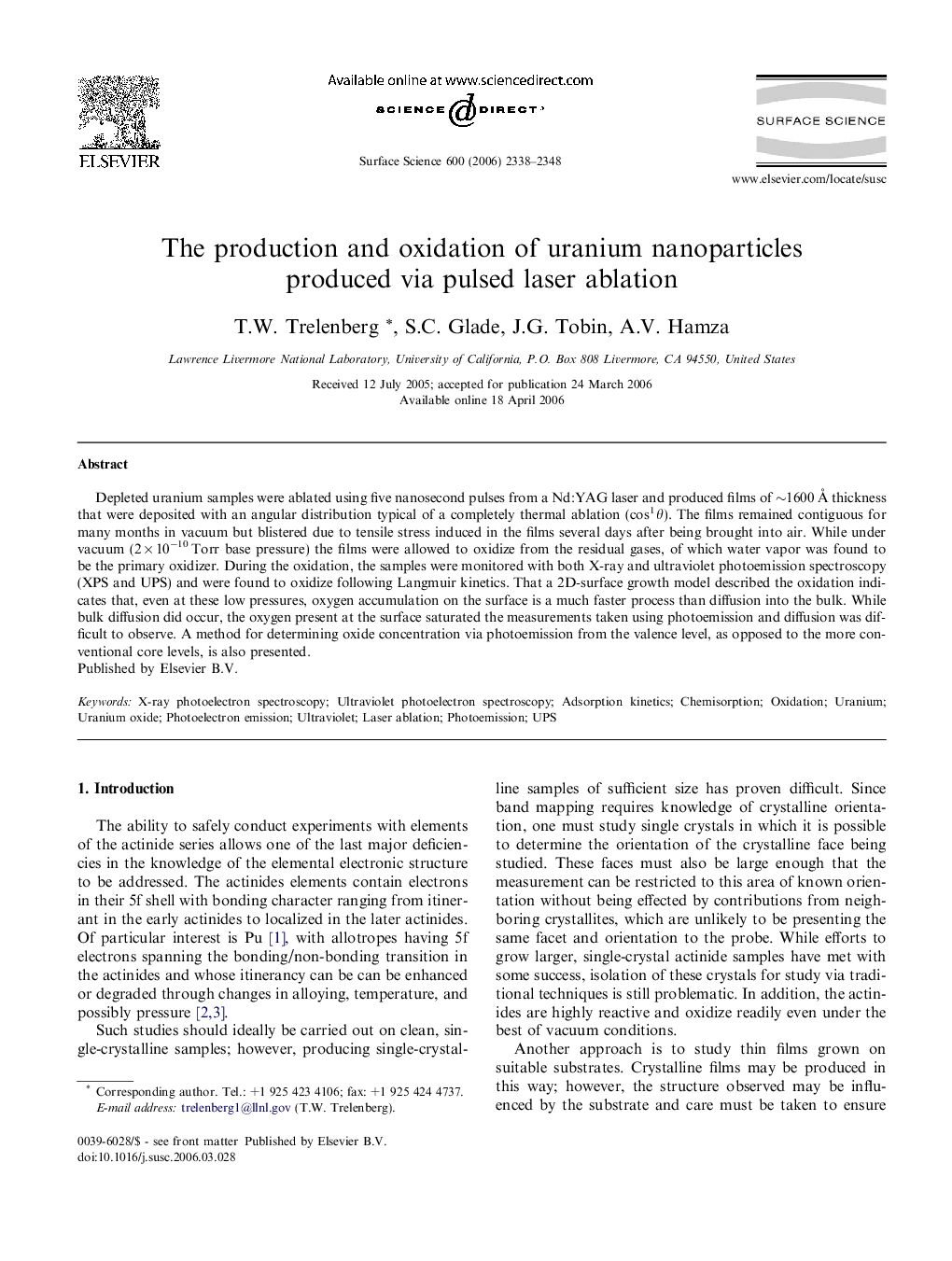| Article ID | Journal | Published Year | Pages | File Type |
|---|---|---|---|---|
| 5425703 | Surface Science | 2006 | 11 Pages |
Abstract
Depleted uranium samples were ablated using five nanosecond pulses from a Nd:YAG laser and produced films of â¼1600Â Ã
thickness that were deposited with an angular distribution typical of a completely thermal ablation (cos1 θ). The films remained contiguous for many months in vacuum but blistered due to tensile stress induced in the films several days after being brought into air. While under vacuum (2 Ã 10â10 Torr base pressure) the films were allowed to oxidize from the residual gases, of which water vapor was found to be the primary oxidizer. During the oxidation, the samples were monitored with both X-ray and ultraviolet photoemission spectroscopy (XPS and UPS) and were found to oxidize following Langmuir kinetics. That a 2D-surface growth model described the oxidation indicates that, even at these low pressures, oxygen accumulation on the surface is a much faster process than diffusion into the bulk. While bulk diffusion did occur, the oxygen present at the surface saturated the measurements taken using photoemission and diffusion was difficult to observe. A method for determining oxide concentration via photoemission from the valence level, as opposed to the more conventional core levels, is also presented.
Keywords
Related Topics
Physical Sciences and Engineering
Chemistry
Physical and Theoretical Chemistry
Authors
T.W. Trelenberg, S.C. Glade, J.G. Tobin, A.V. Hamza,
